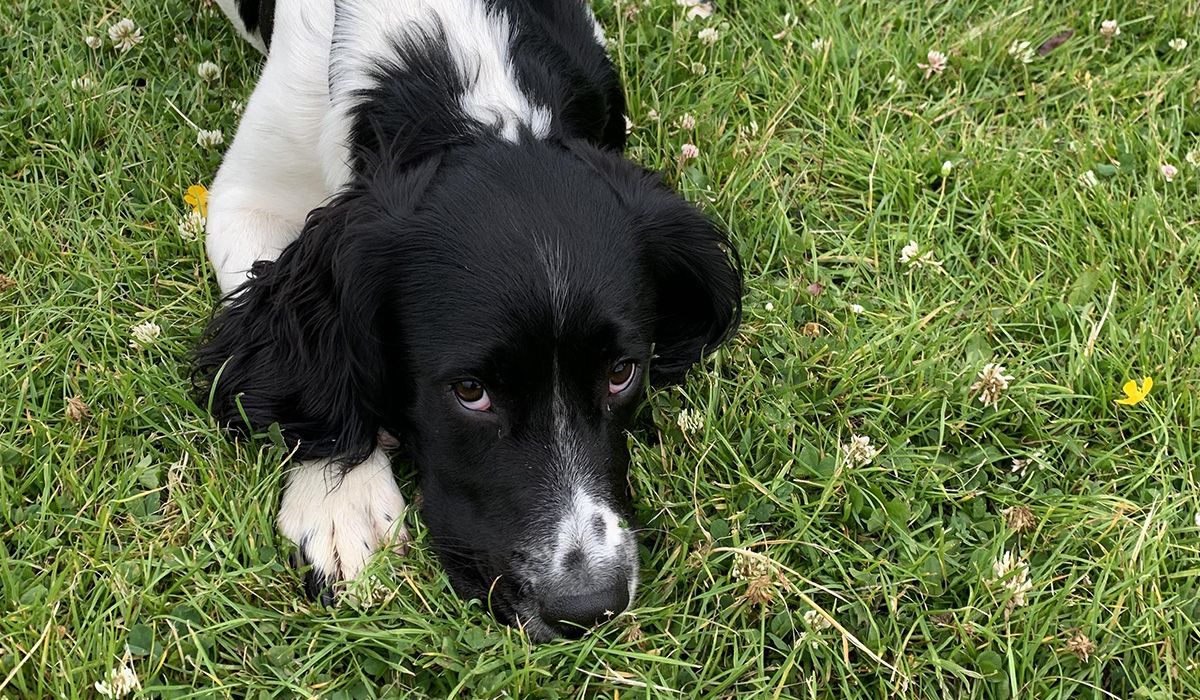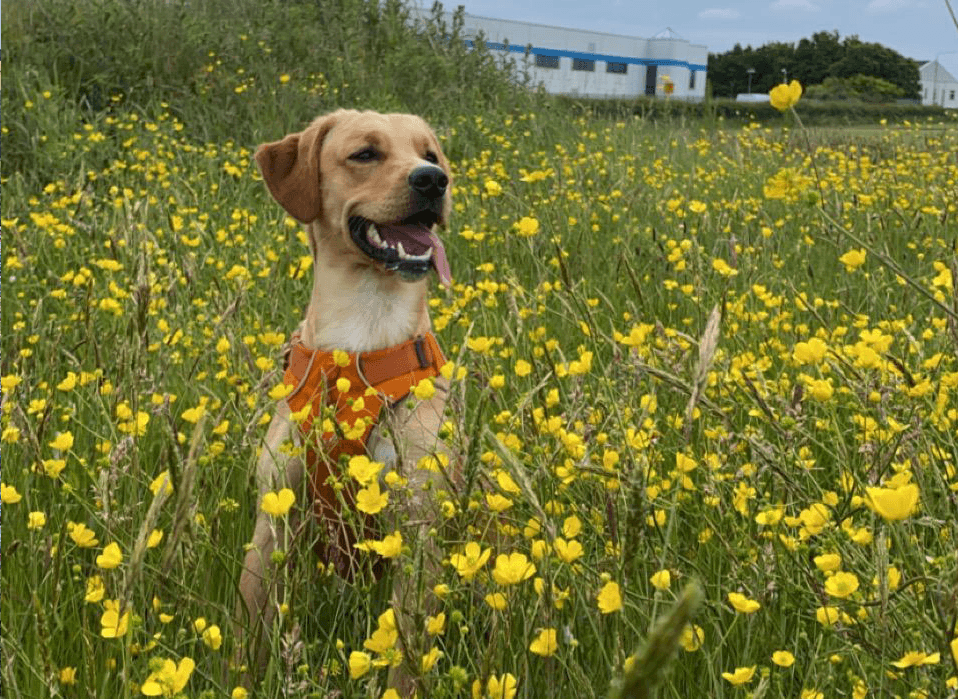Reviewed by Dr Jill McMaster BVM&S MBA MRCVS, Veterinary Surgeon and in-house expert at BorrowMyDoggy on 14 June 2023
When summer is in full swing there are plenty of lovely long dog walks to look forward to, and it’s always good to be aware about potential dangers to your dog to ensure they keep safe and healthy. In other articles, we have covered beach safety, how to keep your dog cool and poisonous plants to avoid. This time we want to warn you about certain creatures that may be harmful when your dog comes into contact with them.
Don’t worry, we will also cover how to deal with these situations if they do arise. However, if you are ever unsure about the health of your dog or you don’t know how to deal with a situation involving your dog, please always speak to your vet.

Ticks, mosquitoes & other insect bites
Ticks are active all year but they are more prominent from spring to autumn. They are commonly found in woodland areas, grassland and heaths. If you are walking in deer or sheep habitats, this also increases the likelihood of ticks.
Prevention
Ticks can carry diseases that can be harmful to dogs. To prevent ticks from attaching to your dog, you can use spot-on treatments, tablets or tick-repellent collars. Your veterinary practice can advise on the best product for your dog. Another useful tip is to reduce the spread of ticks from you or your clothing, onto your dog. A tick can be transferred just from your dog brushing against you. Wearing long clothing, covering the bottom of trousers with socks to get rid of the ankle gap, insect repellent and always checking your clothing before going home can help prevent this.
What to do
You can check for ticks on your dog’s skin by running your hand over them. The tick will appear as a small bump on their skin, especially in the areas around their head, neck, ears and feet.
The most important thing to remember is not to just try and pull out the tick without a removal device or the know-how. Squeezing the tick or leaving the head in your dog can cause discomfort and infection. Also, techniques like burning the tick or covering it in petroleum jelly, can cause the tick to become distressed and release more of it’s potentially irritant or infected saliva into your dog, so are not recommended.
Removal devices can be very useful. Be sure to follow the instructions on the device you are using to twist the tick out of your dog’s skin, then immediately dispose of the offending tick. Following this, make sure to disinfect the tool and thoroughly wash your hands.
You may still want to contact your vet to check them over and ensure there are no other ticks or side effects.
Other insect bites
Bites from other insects such as midges, mosquitoes, ants and flies are not generally harmful in the UK, but can cause irritation which can lead to infection.
Prevention
Some flea and tick prevention treatments can also repel other insects. Also try to avoid taking your dog through an area at a time when these insects are most active.
What to do
Ant bites will appear as red dots on your dog’s skin whilst a fly bite may appear as lumps or scabs. In both instances, you will need to clean them to help your pup feel more soothed and prevent infection. You can also apply a cool compress to the affected area to reduce discomfort.
If you are unsure of what type of bite your dog has, you can apply a cool compress while calling your vet to find out more.
Bees & Wasps
Generally, bee and wasp stings are not deadly. In a few instances where the dog has an allergic reaction or if the sting is in an area such as the throat or mouth, it can become life-threatening. You should seek help from your vet if your dog displays signs of discomfort or allergy which include vomiting, weakness or difficulty breathing.
What to do
If you notice your dog is stung, the first thing to do is attempt to remove the stinger. You can do this by using a hard, flat object like a credit card. Try to scrape below the venom sac and do not squeeze or pull as this may release more venom.
Meanwhile, attempt to keep your dog calm and cool. You can lay a cool cloth on the area or apply ice wrapped in a cloth to soothe the wound. You can also wash the affected area with a small amount of very dilute salt water.
If your dog is stung in its mouth or throat, you should speak to your vet immediately.

Snakes
With less than 100 cases in the UK each year, snakes are not a huge threat to your dog. However, it is still important to know in case of emergency. They are most common in long grass, woodland, moorland and coastal areas. If you are unsure about the ware you are walking in, it may be best to keep your dog on a lead until you are in a safer area.
The only snake in the UK which is poisonous is the adder. They will react in self-defence by biting your dog and consequently releasing their poison. Grass and smooth snakes aren’t venomous and are unlikely to bite.
What to do
In incidences of snake bites there are three actions you should take immediately:
- Take note of what the snake looks like or a quick photo so the type of bite can be identified. Do not attempt to harm or kill the snake as they are protected in the UK and it is illegal to do so. You could also end up getting hurt yourself!
- Try to keep your dog still and calm. This will prevent the venom from moving around your dog’s body and isolates it to one area.
- Call your vet - you will need to take them to your vet in order to receive the anti-venom or other treatment.
It is best to carry your dog or, if this is not possible due to their size, walk them on a lead back to your car so you can get to the vets.
Toads
A lesser-known threat to your dog is toads. Toads release a poison through their skin when they feel threatened and it is highly likely that a dog looming over them, oblivious to their actions, could cause this reaction. If your dog was to then lick the toad, the poison could harm them or at the very least, cause irritation to their tongue or skin.
What to do
Immediately rinse the affected area and call your vet to find out what the next steps should be.
We hope this guide hasn’t scared you too much and you are feeling more prepared for when you get outside on your adventures this summer. We hope you have a fabulous summer of exploring new walks with your pooch!
Poisonous plants to dogs
Garden plants poisonous to dogs
What to do if your dog has food poisoning
Preventing herbicide poisoning in dogs
Protecting your dog from pests and insects
Foods your dog can and can’t eat
10 springtime hazards for dogs
Christmas foods to keep away from your dog
Dog poo colours: what do they mean?





